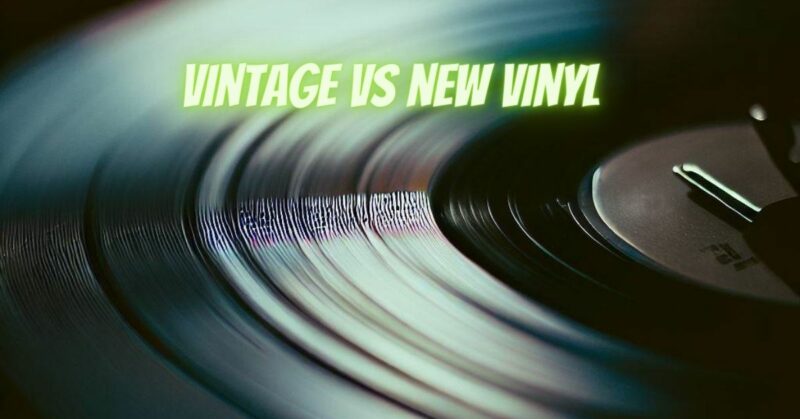Vinyl records, a symbol of timeless music appreciation, come in two distinct flavors: vintage and new. Each type carries its own charm, characteristics, and considerations that captivate audiophiles and collectors alike. In this article, we’ll delve into the world of vintage and new vinyl records, exploring their differences, the appeal they hold, and the factors to consider when choosing between them.
Vintage Vinyl:
1. Nostalgic Appeal: Vintage vinyl records hold a piece of history, evoking a sense of nostalgia and a connection to the past that new records can’t replicate.
2. Character and Warmth: Analog production techniques give vintage records a unique warmth and character that many enthusiasts find captivating.
3. Collectibility: Owning vintage records can be like holding a piece of music history, as they often come with original cover art and packaging that reflects the era.
4. Potential for Wear: Vintage records may have seen years of use, potentially leading to wear, scratches, and surface noise that can impact sound quality.
New Vinyl:
1. Freshness and Quality: New vinyl records benefit from modern manufacturing techniques, resulting in cleaner grooves, less surface noise, and improved consistency.
2. Pristine Condition: New records arrive in pristine condition, free from wear or damage caused by previous use or poor handling.
3. Contemporary Pressing: New records might be pressed from remastered recordings, offering improved sound quality and accuracy compared to their vintage counterparts.
4. Wide Range of Titles: New vinyl releases encompass a broad range of musical genres, offering access to contemporary artists and their works.
Factors to Consider:
1. Sound Quality: Both vintage and new records offer unique sound characteristics; vintage records can carry the warmth of analog, while new records can have cleaner sound due to modern manufacturing.
2. Collectibility: Vintage records hold historical and sentimental value, while new records might be sought after for their pristine condition and modern remastering.
3. Condition: Vintage records can show signs of wear, whereas new records arrive in excellent condition. Your preference for character or pristine sound might influence your choice.
4. Rarity: Vintage records can be rare and difficult to find, while new releases offer the advantage of availability.
5. Investment Value: Collectible vintage records can appreciate in value over time, while new records are typically more affordable and accessible.
The choice between vintage and new vinyl records ultimately comes down to personal preference, collecting goals, and the type of listening experience you seek. Vintage vinyl offers a glimpse into the past, with character and warmth that resonate with nostalgia. On the other hand, new vinyl provides pristine sound and the joy of discovering contemporary music on an analog medium. Whether you’re a seasoned collector or new to the vinyl world, both vintage and new records offer their own unique treasures, allowing you to immerse yourself in the captivating world of analog sound.


